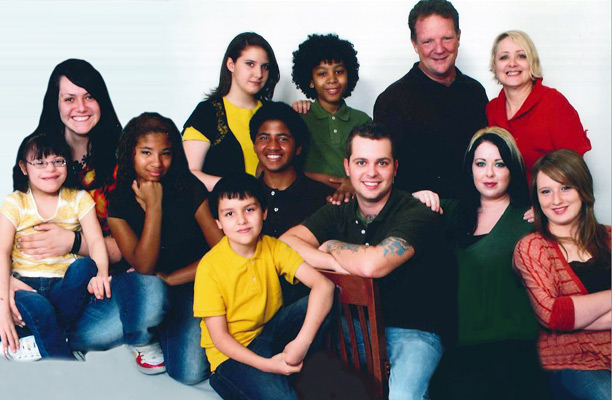
Kimberly Woolpert says that if she could change one thing about her adoption journey, she would have started earlier.
Kimberly and her husband, Mark, had talked about adoption from the start. Their goal was to have two children by birth and adopt as well. After their birth children became teens, they looked into private and international adoptions. Neither option felt like a good fit.
It was not until after her father died, when Kimberly was 40 years old, that the family started talking about adoption again.
“My dad came from a really bad home, and he told us horrible stories about being abused growing up. No one ever rescued him. Mark and I decided that in Dad’s honor we would try foster care,” Kimberly said.
The need for Native American families
The Woolperts had moved from California to Oklahoma, where, Kimberly says, there is a tremendous need for families who can foster and adopt children who are Native American. Kimberly has Choctaw heritage, and Mark is part Cherokee. Under the rules set forth by the Indian Child Welfare Act (ICWA), being able to demonstrate their tribal affiliation gave them preference in adopting children with Native American heritage. (Read more about the history and significance of ICWA.)
The couple completed foster care classes and received their first placement in 2000. By 2007, they had adopted nine children, all with Native American roots.
“I am compelled to try to help kids, as many as I can. We have taken in some little ones, but mostly we have adopted teens and sibling groups, the children who I thought had the least chance of finding a home,” Kimberly said.
Keys to success
The Woolperts live in a 6,500-square-foot home and also enjoy a 50-acre property nearby. In order to ensure that everyone had their own bedroom, they renovated a church on the grounds to provide additional space.
“A key to our children’s adjustment was having a space of their own where they could be alone when they needed to,” Kimberly said.
Accessing counseling and providing structure were other contributors to their children’s success.
“My advice to parents of adoptive children? Take advantage of your resources—and keep the kids busy!” Kimberly said.
“We are a team”
Today the Woolpert’s children are between 14 and 33 years old. Most have moved out. Some have started families of their own, while others have left home and returned a year or two later.
“They feel secure here,” Kimberly says. “The kids are friends as well as siblings. I see them being a family long after we are gone. I picture them raising their own kids together someday.”
Kimberly says that she feels truly blessed to have been able to help so many children. She only wishes she could do more.
“I wish we hadn’t waited until we were older to adopt. I wish I had started when I was 20 instead of 40. Think of how many more kids we could have taken in.”